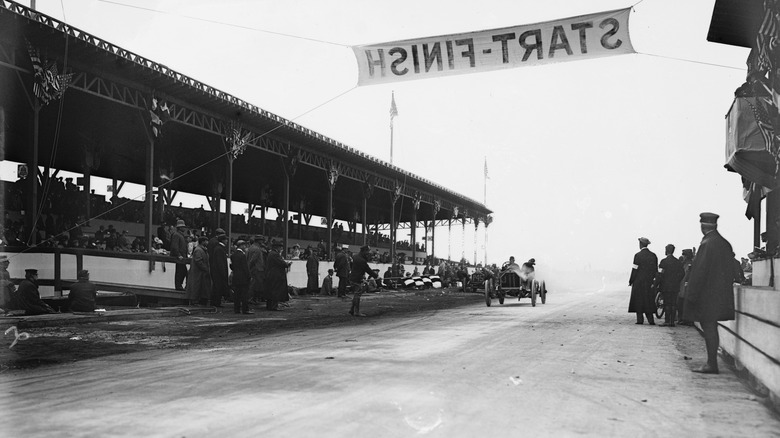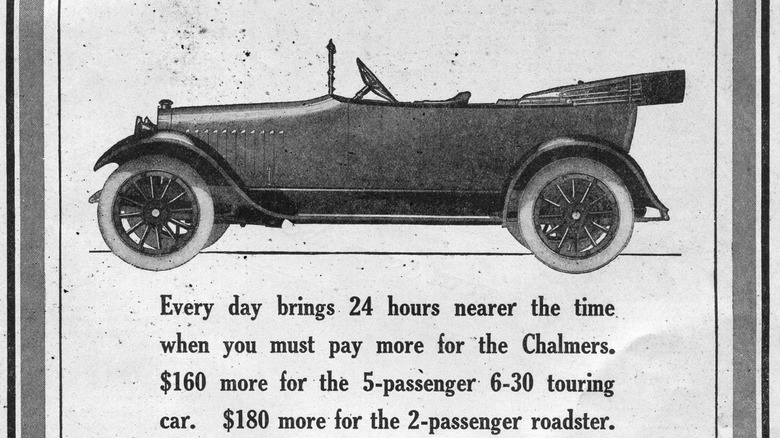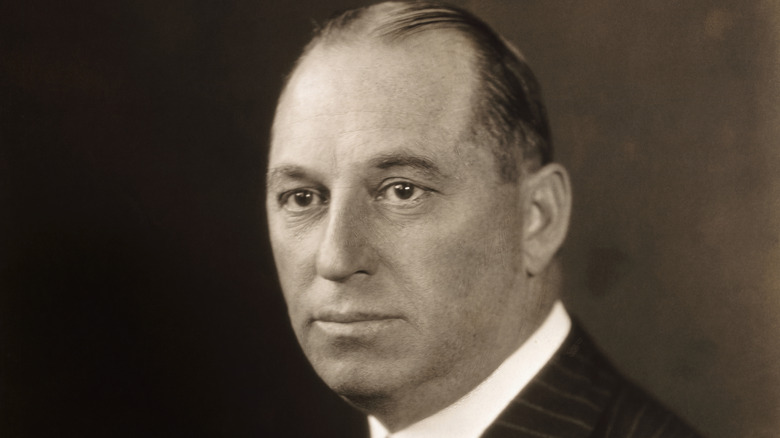Whatever Happened To Chalmers Motor Company?
Many people have never heard of the Chalmers Motor Company, but they have heard of Chrysler. That's sometimes what happens when one company swallows another and then remains successful for over 100 years. However, Chalmers is more than just part of Chrysler's strange history. Like many early 20th-century automobile manufacturers that didn't make it, the company made waves with fast, stylish luxury cars that ultimately helped shape the industry.
Hugh Chalmers initially grew his fortune as Vice-President of National Cash Register, a company that quite literally produced cash registers. That position gave him a jumping-off point to ultimately run his own company. Chalmers made the transition from cash registers to automobiles and joined the Thomas-Detroit Company to build cars in Detroit in partnership with the E.R. Thomas Motor Company of Buffalo, New York. Thomas himself wanted out, so Chalmers bought his stake, and the company was fittingly renamed Chalmers-Detroit in July 1908.
[Featured image by Bain News Service via Wikimedia Commons | Cropped and scaled]
Winning races with the Model 30
Chalmers produced a line of higher-end vehicles and developed a reputation for winning races. It helped that the Thomas Flyer had won the famous New York to Paris race in 1908. The company's badge became a symbol of wealth, and the vehicles generally sold in the $1,500 to $2,800 range. The Model 30 was at the center of the company, featuring a 226 cubic-inch four-cylinder engine and an advanced valve train that helped it win the 2,851-mile Glidden Tour race in 1910.
Chalmers achieved full ownership of the company by 1910 due to some disagreements about pricing models, which led former partner Howard Coffin to split with him. The brand remained a luxury producer with a proud racing reputation. However, it didn't last. According to Hemmings, Chalmers aimed to achieve annual sales of 60,000 cars, but his business methods ultimately put the company in jeopardy.
Chrysler steps in
As described in author Charles K. Hyde's "Riding the Roller Coaster: A History of Chrysler Corporation," Chalmers was hoping to transition from a "low-volume, high-cost producer" to one that increased production and lowered costs. It was a tough transition to make, especially because demand had not caught up with this rise in production. Dealerships were flooded with more Chalmers cars than they could sell in 1916, which caused sales to dry up significantly by the end of that year. From there, business continued to decline. Despite the company's prestigious reputation, the designs and prices just hadn't kept up with the market.
A bailout from the Maxwell Motor Company followed, but with struggling sales and a post-World War I recession that hit in 1918, any boost that may have resulted failed to come to fruition. The last Chalmers vehicles were built in 1923, and the Maxwell portion of the business was later absorbed in one of Chrysler's many mergers.
Even with the company's short life, the Chalmers legacy is still an important part of American automotive history. A 1920 Chalmers advertisement acquired by the Automotive History Preservation Society sums up the brand's approach nicely: "The Chalmers Sports Model expresses an ideal which men of discernment will appreciate. It combines striking originality and distinction without offending good taste."


